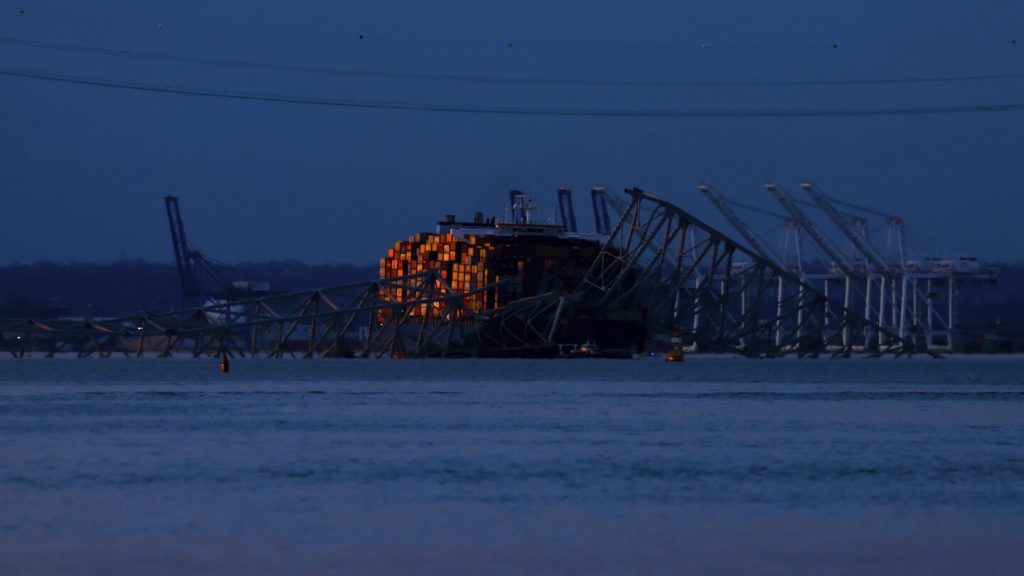The U.S. Coast Guard is working on creating a temporary alternate channel for vital vessels near the fallen Francis Scott Key Bridge in Baltimore, following a fatal collapse caused by a freighter collision. Crews are in the process of removing debris from the bridge site, with dive teams surveying the area and workers using torches to cut parts of the structure. The temporary channel will have specific depth and clearance measurements and will be established on the northeast side of the main channel, in an effort to reopen the port of Baltimore.
The captain of the port, Capt. David O’Connell, emphasized the importance of opening the alternate route as a crucial step towards restoring marine traffic flow in Baltimore. Meanwhile, the Small Business Administration is launching a center in Dundalk to assist small businesses affected by the bridge collapse with accessing loans. The collapse occurred when the crew of cargo ship Dali lost control and power, resulting in a mayday call that prevented vehicles from entering the bridge but left eight workers stranded. Tragically, two workers survived, two bodies were recovered from a submerged pickup truck, and four more are presumed dead due to dangerous conditions preventing divers from carrying out search operations.
The cargo ship Dali, managed by Synergy Marine Group and owned by Grace Ocean Private Ltd., collided with one of the bridge’s support columns as it was leaving port. In addition to clearing the shipping channel, authorities are working on strategies for rebuilding the bridge, a vital piece of infrastructure completed in 1977. The bridge played a central role in Baltimore’s maritime culture and the surrounding area’s transportation network. With the port of Baltimore handling a significant amount of car and farm equipment shipments, plans are being made to provide aid packages to individuals who may lose their jobs or businesses due to the extended closure of the port.
As officials continue to navigate the aftermath of the bridge collapse and shipping disruption, efforts are being made to ensure the safety of maritime traffic in the region. The tangled debris underwater and hazardous weather conditions have presented challenges to search and rescue personnel, impacting their ability to locate missing workers. The incident marks a tragic event that has not only affected the local community but also raised concerns about the infrastructure’s resilience and preparedness for similar emergencies. With ongoing support from government agencies and private organizations, a coordinated response is underway to address the immediate and long-term impacts of the bridge collapse on Baltimore’s economy and transportation network.


